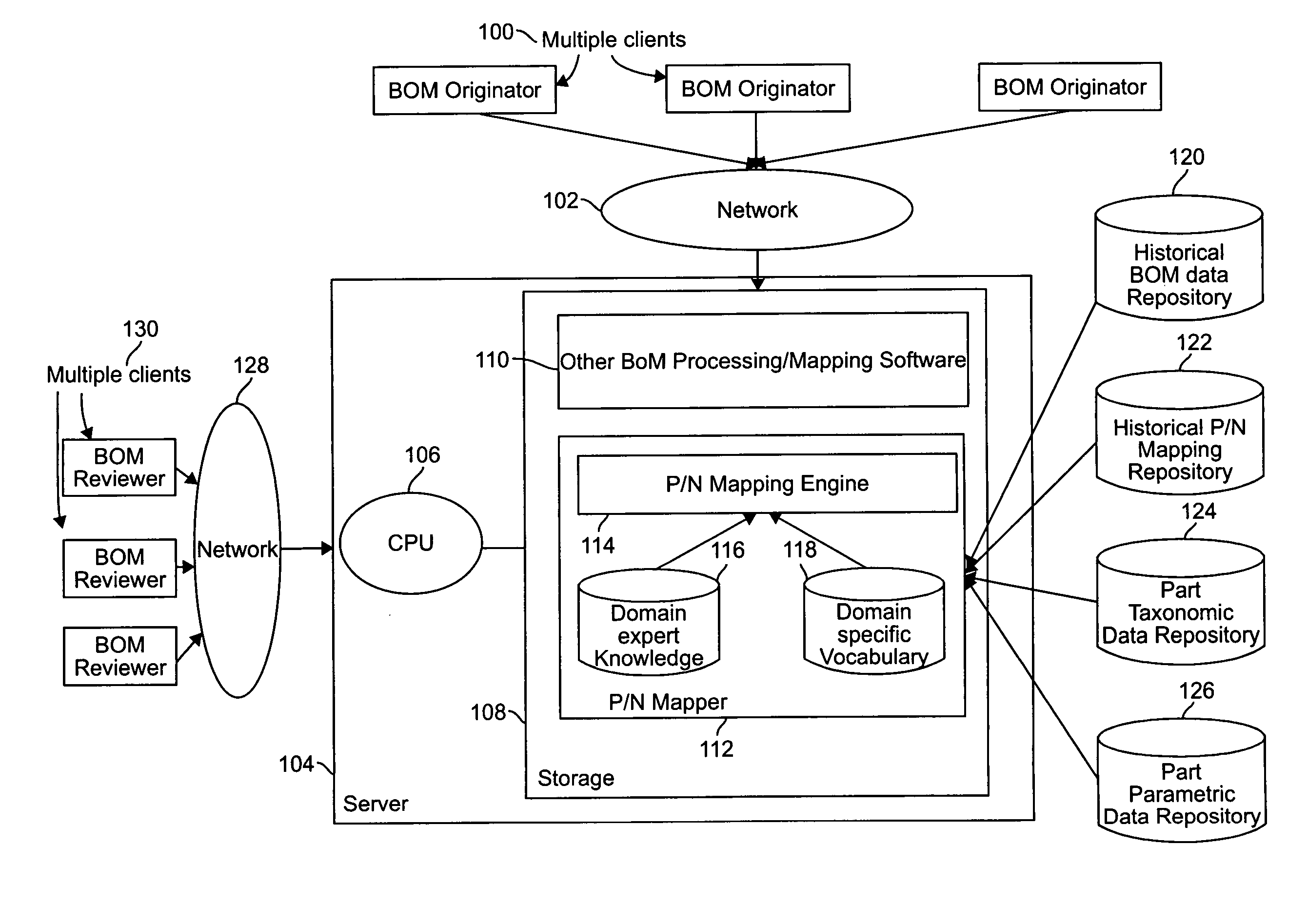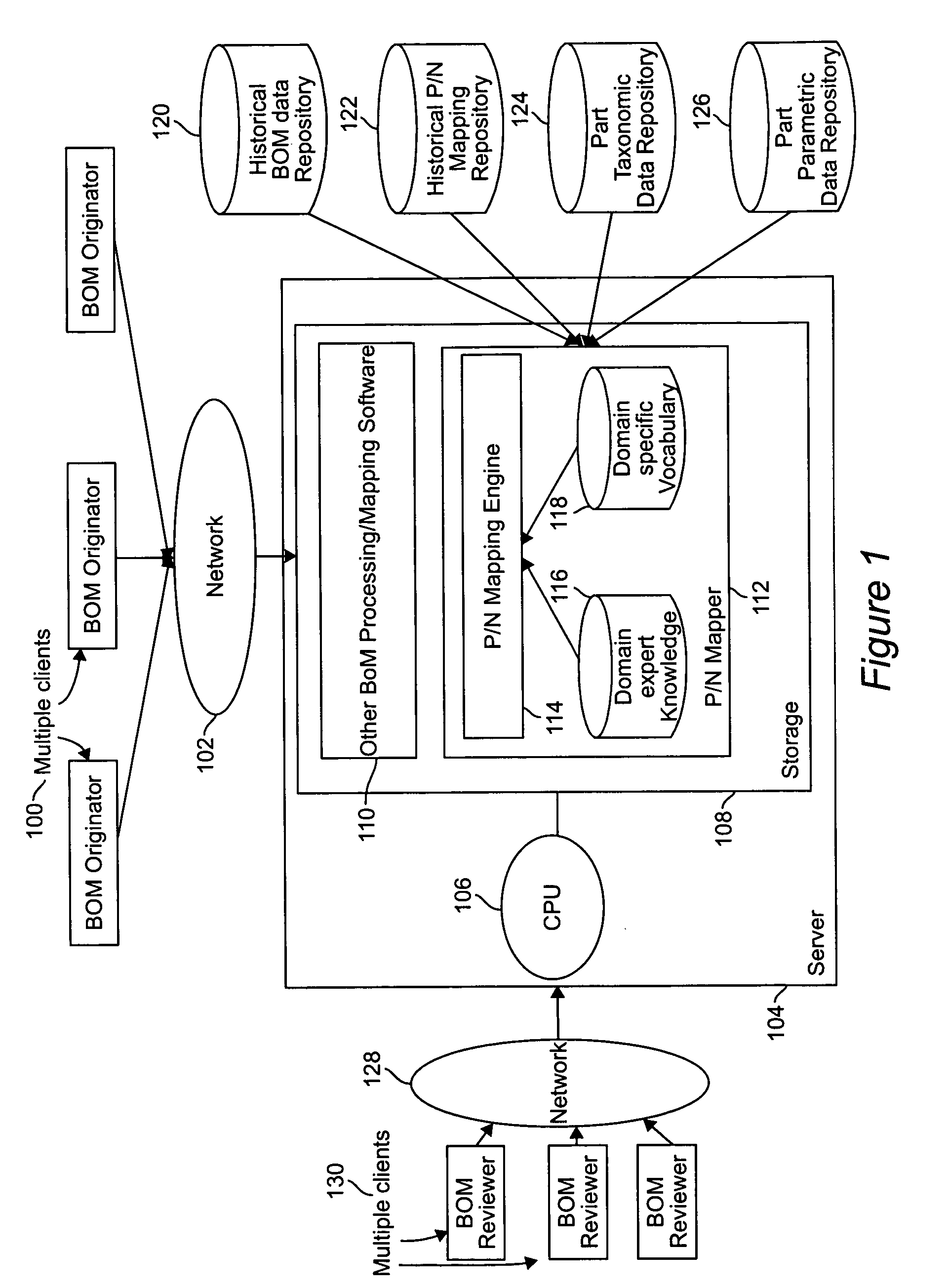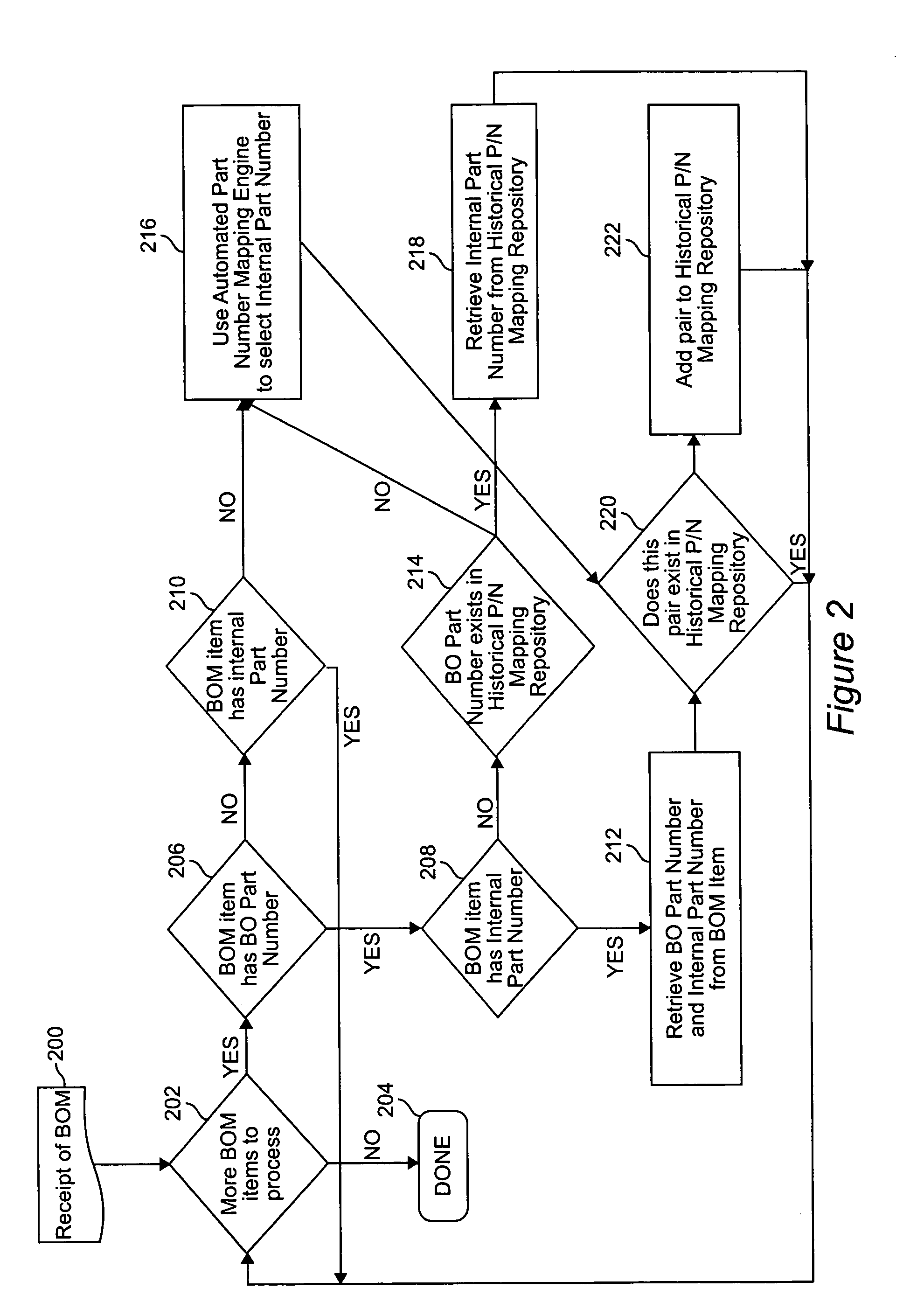System and method for automated part-number mapping
a technology of automatic mapping and part numbers, applied in the field of part numbers, can solve the problems of missing receiver internal parts number, receiver internal part number, and bom sender internal part number, and achieve the effect of improving the performance of on-going mapping of boms
- Summary
- Abstract
- Description
- Claims
- Application Information
AI Technical Summary
Benefits of technology
Problems solved by technology
Method used
Image
Examples
Embodiment Construction
[0026] Referring now to the drawings wherein like reference numerals denote the same or similar parts, and more particularly to FIG. 1, there is shown a block diagram of one preferred embodiment of the invention. In this embodiment, multiple clients as BOM originators 100 are connected via network 102 to a server 104. The server 104 comprises a central processing unit (CPU) 106 and storage 108. The storage 108, in turn, comprises other BOM processing / mapping software 110 and a part number (P / N) mapper 112. The P / N mapper 112 includes a P / N mapping engine 114 which accesses a domain expert knowledge (dek) database 116 and a domain specific vocabulary (dv) 118. The P / N mapping engine is described in more detail in FIG. 3 and the associated description. The dek database contains information specific to the domain for which the P / N mapper is being used that may be available via human experts, books, manuals, etc. Such information may include different names used by various suppliers, kn...
PUM
 Login to View More
Login to View More Abstract
Description
Claims
Application Information
 Login to View More
Login to View More - R&D
- Intellectual Property
- Life Sciences
- Materials
- Tech Scout
- Unparalleled Data Quality
- Higher Quality Content
- 60% Fewer Hallucinations
Browse by: Latest US Patents, China's latest patents, Technical Efficacy Thesaurus, Application Domain, Technology Topic, Popular Technical Reports.
© 2025 PatSnap. All rights reserved.Legal|Privacy policy|Modern Slavery Act Transparency Statement|Sitemap|About US| Contact US: help@patsnap.com



